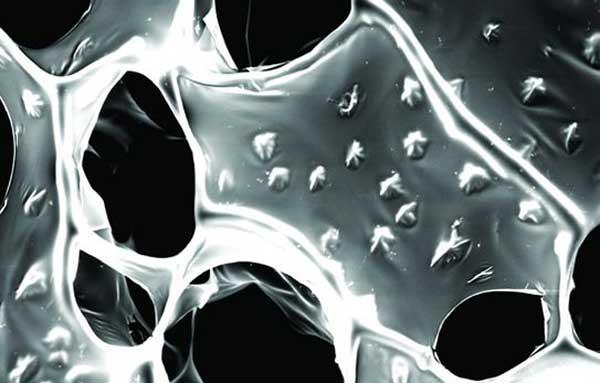Nanowires Give Cardiac Victims Real Heart of Gold

Heart attack victims want to live, doctors want to give, and they've mined a heart of gold to do just that
A team of researchers at MIT and Children's Hospital Boston has built cardiac patches studded with tiny gold nanowires that could be used to create pieces of tissue whose cells all beat in time, mimicking the dynamics of natural heart muscle. The development could someday help people who have suffered heart attacks.
The study, reported this week in the journal Nature Nanotechnology, promises to improve on existing cardiac patches, which have difficulty achieving the level of conductivity necessary to ensure a smooth, continuous "beat" throughout a large piece of tissue.
"The heart is an electrically quite sophisticated piece of machinery," said Daniel Kohane, a professor in the Harvard-MIT Division of Health Sciences and Technology (HST) and senior author of the paper. "It is important that the cells beat together, or the tissue won't function properly."
To build new tissue, biological engineers typically use miniature scaffolds resembling porous sponges to organize cells into functional shapes as they grow. Traditionally, however, these scaffolds have been made from materials with poor electrical conductivity — and for cardiac cells, which rely on electrical signals to coordinate their contraction, that's a big problem.
To solve the problem, the researchers designed a brand-new scaffold material that would allow electrical signals to pass through. The team took as their base material alginate, an organic gum-like substance that is often used for tissue scaffolds. They mixed the alginate with a solution containing gold nanowires to create a composite scaffold with billions of the tiny metal structures running through it.
The researchers plan to pursue studies in vivo to determine how the composite-grown tissue functions when implanted into live hearts. Additionally, the researchers note that this technique could help many different kinds of tissue heal, including muscles, vascular tissue and possibly even neurons
Get the world’s most fascinating discoveries delivered straight to your inbox.
This story was provided by InnovationNewsDaily, a sister site to LiveScience. Follow InnovationNewsDaily on Twitter @News_Innovation, or on Facebook.
 Live Science Plus
Live Science Plus






